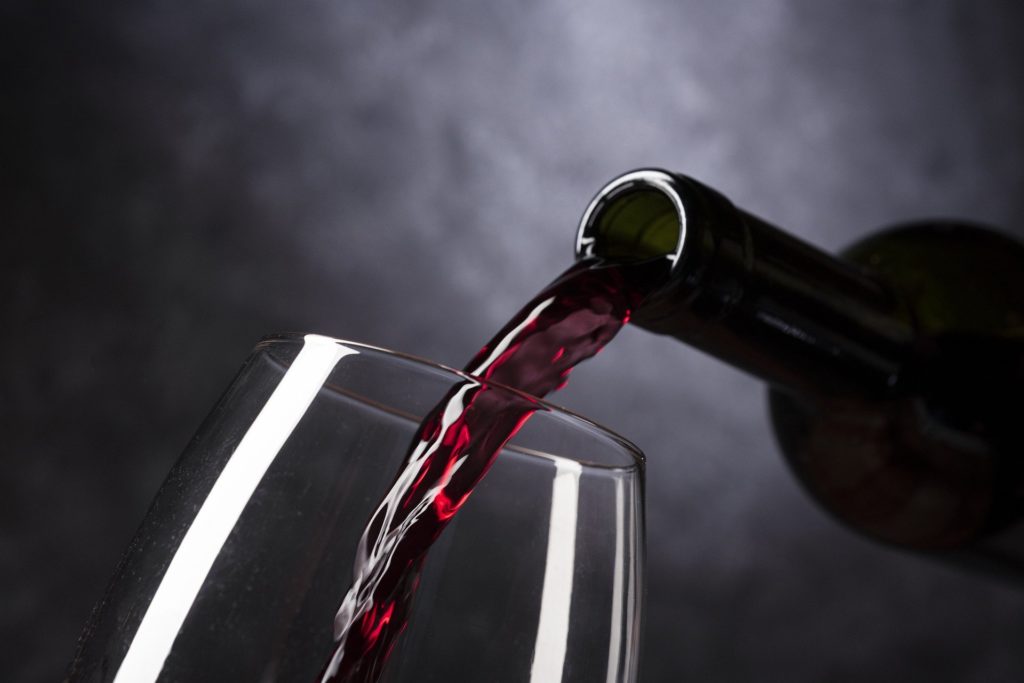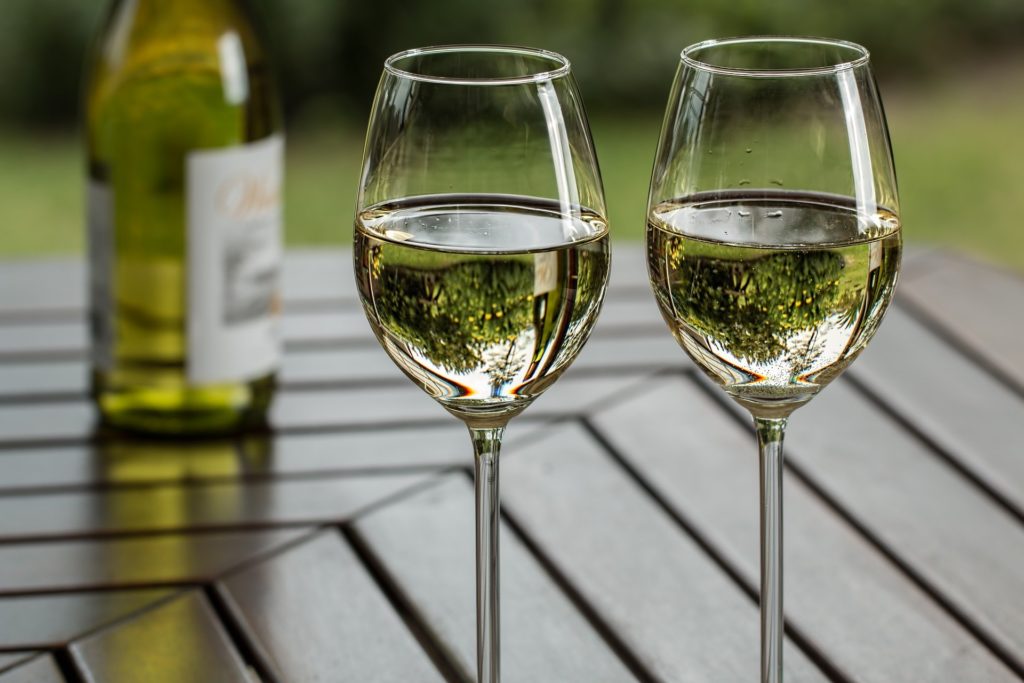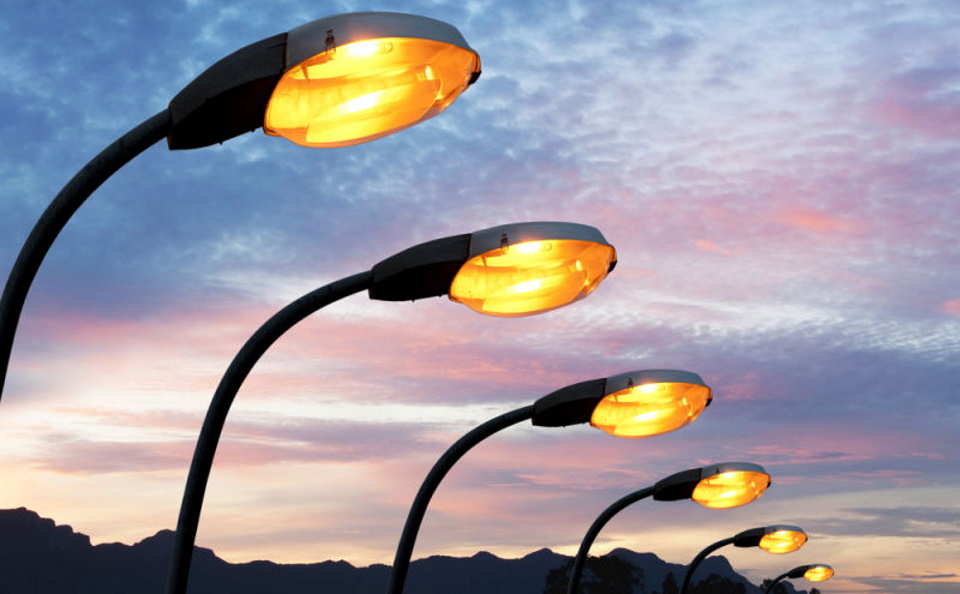Ranking of the best French wines for 2022

French wine has long been the epitome of high quality and excellent taste. The history of winemaking in this country dates back many centuries. It began in the 6th century BC. along with the arrival of the Romans, who introduced the locals to the art of making the "drink of the gods." Since then, the French have developed many rules and traditions associated with winemaking, which are followed by many producers of alcoholic beverages in other countries. And some manufacturing secrets have been kept in the strictest confidence for centuries and passed down from generation to generation.

Many provinces of France gave their name to the wines that were produced on their territory - Burgundy, Bordeaux, Provence, Alsace, the Rhone Valley, the Loire Valley and, of course, Champagne. World-famous wine cellars are located in the capital of France - Paris.
The French have done a great job of selecting grape varieties that are currently considered the best in the world: Sauvignon blanc, Chardonnay, Shiraz or Syrah and Cabernet Sauvignon. The area occupied by vineyards is equal to 840 thousand hectares, or 1.3% of the entire territory of the country.

Drinks differ not only in the different grape varieties from which they are produced. Different regions use their own winemaking technologies, in particular, not only traditional wooden barrels, but also steel or cement containers can be used to age the drink. The use of wild or lab yeast also has a marked effect on flavor.
Currently, France, together with Italy, are generally recognized leaders in the production of wines. The share of France in world exports is about 17%, which amounts to 7-8 billion bottles per year.
Content [Hide]
Types of French wine
The various types of alcoholic beverages produced in France can be divided into three main quality groups:
- Vin de France, or table wines, are made from imported raw materials and subjected to laboratory control. They have a budget price.
- IGP (Indication Geographique Protegee) - local wines that are made from raw materials grown in one of the French provinces and in accordance with the technologies used in this region. The laboratories control the entire manufacturing process, from the variety and quality of the grown grapes to the strength of the finished drink.
- AOP (Appellation d'Origine Protegee) - vintage wines, the most expensive of all. Under strict control are not only the region where the raw materials are grown, but also the conditions for its growth, storage and transportation features, the composition of the pomace and many other factors. Finished products must undergo examination and tasting.
It is unlikely that you will be able to find wines from the last two categories in supermarkets. They are quite expensive and demanding on storage conditions, so the supply of such drinks is mainly carried out by specialized stores that sell a wide range of alcoholic products.
How to choose the right wine?
Stores often offer such a huge range of spirits that making the right choice becomes a daunting task. To choose the right wine, you can use a number of tips.
Do not pay attention only to the price and buy on the principle of "the more expensive the better." This does not always correspond to reality. Often, budget-priced drinks have a composition that is better than expensive varieties. But even among cheap brands, a worthy option is unlikely to be found. Good quality wine will not necessarily have an exorbitant cost, but it will not be lower than 400-500 rubles per bottle.
The upper price ceiling can be prohibitive. For example, the price of the famous Burgundy wine Romanée-Conti Grand Cru AOC is just under 5 million rubles for a 0.75 liter bottle. The cost of another no less famous drink, one of the great red wines of Bordeaux, Château Haut-Brion, is much more modest and approaches 100 thousand rubles for a 0.75 liter bottle.
It is highly desirable that the wine be properly stored before sale. This can often boast of specialized wine shops and boutiques, but not supermarkets.
When choosing the color of wine, you need to focus, first of all, on what dishes it will be served with. Traditionally, red is served with meat, and white with fish. Sweet wines are ideal for desserts, while dry wines are ideal for hot dishes and cold appetizers. If you plan a wide variety of dishes, it is better to give preference to pink, red or white light drinks without a pronounced taste. Such brands as Merlot, Sauvignon, Chardonnay are considered universal.

It is better to give preference to dry or sweet drinks. In the manufacture of semi-dry and semi-sweet wines, the cheapest grape varieties are often used, or even production waste.Unlike sweet varieties, where sugar is a natural preservative, artificial chemicals must be added to them, which does not have the best effect on both taste and effects on the body. Fortified wines are not the best choice due to their high alcohol content.
Be sure to study the composition of the drink. It is better to give preference to those whose name directly indicates the grape variety from which they are produced - Sauvignon, Cabernet, etc. Various exotic names may hide not the most pleasant surprises. If there is little information on the label, this is also an alarm signal. Perhaps the manufacturer is trying to disguise the true composition of the drink in this way and hide the chemicals and additives in it.
An important indicator is the date of bottling, which must be indicated on the label without fail. If you buy a simple table drink, then you should not chase after a long aging period and it is better to buy wine that was bottled no more than six months before the date of purchase. For expensive brands, exposure matters and the longer it is, the more expensive and tastier the drink.
The bottle and cork can also tell a lot. More precisely, there are no special requirements for bottles, except that they should be them, and not a tetrapack package. Glass preserves the taste of wine much better than other materials and should be preferred. But with traffic jams, the situation is different. If earlier a plastic or tin lid was considered a sign of cheap low-quality wine, now most producers use them. This is primarily due to the convenience for customers.Such lids are easy to open without a corkscrew, and if the bottle is not drunk to the end, it can be easily closed and stored. So the presence of a cork is now not a mandatory sign of a quality drink. The only exceptions are cases when an old long-aged wine is purchased, which must breathe. Here tin or plastic is unacceptable.
The above criteria are not exhaustive, since even products of the same manufacturer, made in different years, may have differences in color and taste. This is due to the fact that many factors affect the ripening of grapes, primarily weather conditions, and they change every year.
For more confidence in the correct choice, you can study international wine ratings, such as Robert Parker (RP), Wine Spectator (WS), Decanter (DEC-5, DEC-100), Stephen Tanzer (ST). National ratings of La Revue du vin de France (RVF), Michel Bettane & Thierry Desseauve (BD), Burghound (BH) and others have been developed for French wines.
Ranking of the best French wines for 2022
If the drink is pleasant, the buyer will buy it again. This rule in matters of alcoholic products works very indicatively. Therefore, to compile the rating, the varieties were chosen, which are most often given by buyers of the Yandex Market trading platform, taking into account the fact that good wine cannot cost less than 500 rubles. In addition, the composition of the drink was analyzed for the presence of chemical additives in it.
The best red French wines
Red wine is a drink with a long history.At present, its production combines ancient traditions and the latest technologies, which makes it possible to obtain drinks with a variety of tastes and different strengths, perfectly suited to meat dishes and snacks.
French Dog Merlot
votes 0

Volume: 0.75l
Fortress: 12.5%
Kind: Red semi-dry
Grape variety: Merlot
Manufacturer: Yvon Mau
Region: Languedoc-Roussillon
The average price is 595 rubles.
The manufacturing company began its history in 1897, and during this time has managed to work out its own technology for making inexpensive, but high-quality wine with excellent taste characteristics. They currently own 130 vineyards located in various parts of the province of Bordeaux. A drink of a dark raspberry hue with a bright berry flavor, which has hints of chocolate, is perfect for meat dishes cooked on an open fire, and can also serve as an aperitif. Serve better at a temperature of 14-16 degrees.
- bright taste;
- pleasant fruit and berry aroma with a touch of vanilla;
- democratic value.
- not found.
Rivesaltes M.Chapoutier
votes 0

Volume: 0.5l
Fortress: 16%
Style: Red sweet
Grape variety: Grenache-Garnacha
Manufacturer: M. Chapoutier
Region: Languedoc-Roussillon
Average price: 1999 rubles.
Vineyard Côte du Rhone, which serves as a supplier of raw materials for this wine, is one of the oldest in France and has existed since the time of its enslavement by the Roman Empire. The local lands practically do not know frosts and crop failures, so ripe grapes are distinguished by excellent taste characteristics. Aging in oak barrels according to ancient technology adds a spicy aftertaste.Pairs well with meat dishes, including pates, as well as foie gras and chocolate.
- beautiful garnet red color with brick reflections;
- harmonious silky taste and long pleasant aftertaste;
- pleasant cherry aroma with hints of licorice and green pepper.
- belongs to the fixed category.
Louis Max Nuits Saint Georges Les Lievres
votes 0

Volume: 0.75 l
Fortress: 13%
Kind: Red dry
Grape Variety: Pinot Noir
Manufacturer: Louis Max
AOC: Nuits Saint-George
Region: Burgundy›Cote de Nuits
Average price: 5225 rubles.
An excellent drink with a brilliant dark red hue that tastes and smells as good as it looks. It is distinguished by a pleasant aroma of blackcurrant and vanilla, and notes of cherries and olives are added to the taste of currants. Excellent with red meat or game dishes, as well as pasta and risotto. The optimum serving temperature is 16-18 degrees.
- bright rich taste;
- long pleasant aftertaste;
- does not contain preservatives.
- not found.
Domaine Michel Gros Vosne Romanee 1er Cru Aux Brulees
votes 0

Volume: 0.75 l
Fortress: 13%
Kind: Red dry
Grape Variety: Pinot Noir
Producer: Domaine Michel Gros
Region: Burgundy, Cote de Nuits
Average price: 12745 rubles.
This company was founded in 1765 and carefully keeps the family secrets of making first-class wine. Drinks from the vineyards of Vincent Rape are distinguished by their exquisite and fresh taste. They go well with poultry dishes, and can also adequately replace white wines in combination with seafood or fish. This drink is one of the best aperitifs.
- light, juicy, slightly spicy sour taste with hints of grapefruit and lemon;
- bright rich fruity-woody aroma;
- versatility, suitable for many dishes.
- high price.
E. Guigal Chateau de Nalys Rouge
votes 0

Volume: 0.75 l
Fortress: 14%
Kind: Red dry
Grape varieties: Grenache, Syrah
Manufacturer: Louis Max
Region: Rhone Valley
Average price: 15790 rubles.
Winery Guigal is a relatively young enterprise. It was founded in 1946 in one of the greatest communes of the Northern Rhone - Côte Roti. However, many of the vineyards from which the raw material is supplied have a much older history and were established 2400 years ago. Manual processing and the use of only environmentally friendly growing technologies ensure the exceptional quality of the crop.
- beautiful dark red color with a ruby sheen;
- the balanced aroma of ripe berries and plum jam is complemented by notes of sandalwood, vanilla and black tea;
- velvety taste with hints of dark chocolate and spices.
- produced in small quantities;
- high price.
The best French white wines
White wines are traditionally considered the best companions for fish and seafood dishes, as well as for sweet dishes, desserts and fruits.
Coeur de Muscat de Saint Jean de Minervois AOC
votes 0

Volume: 0.5l
Fortress: 15%
Style: White sweet
Grape variety: Muscat
Producer: Les Grands Chais de France
Region: Languedoc Roussillon, Minervois
Average price: 1121 rubles.
The taste of this drink is largely influenced by the characteristics of the soil on which the vineyard is located. It is so rich in limestone that it has a snow-white color.Extensive experience and a staff of qualified employees ensure the production of high quality products. This wine can be an excellent aperitif, as well as harmoniously complement liver, poultry, fruits and desserts.
- pure golden yellow;
- fresh aroma of exotic fruits;
- pleasant berry taste;
- democratic value.
- not found.
Pierre Sparr Mambourg Grand Cru
votes 2

Volume: 0.75l
Fortress: 13%
Kind: White semi-sweet
Grape Variety: Pinot Gris
Manufacturer: Pierre Sparr
Region: Alsace, Alsace AOC
Average price: 2309 rubles.
Harvested on the southern slope of the Siegolsheim hill, it is grown according to traditional technologies and fermented in time-honored ways. The drink is aged on fine lees for 8-10 months.
- beautiful golden yellow color;
- strong fruity-candy aroma;
- rich, moderately sweet taste.
- not found.
Vidal-Fleury Condrieu
votes 0

Volume: 0.75 l
Fortress: 13.5%
Kind: White dry
Grape Variety: Viognier
Manufacturer: Vidal-Fleury
Region: Rhone Valley
Average price: 8700 rubles.
This light drink goes well with fish dishes, as well as fruits and desserts. Before serving, it is recommended to cool to a temperature of 7-10 degrees.
- beautiful golden yellow color with a greenish tint;
- pleasant floral aroma;
- very soft and pleasant fruity taste with slight sourness.
- not found.
Domaine Leroy Bourgogne Blanc
votes 0

Volume: 0.75 l
Fortress: 12.5%
Kind: White dry
Grape Variety: Chardonnay
Manufacturer: Domaine Leroy
Region: Burgundy, Cote d'Or (Cote d'Or)
Average price: 12260 rubles.
For the production of this drink, a crop of berries grown by an organic method is used. A distinctive feature is that this wine is produced without fining and filtration. Pairs with fish and seafood dishes, pork, cheese and mushrooms.
- beautiful yellow-golden color;
- pleasant aroma with hints of peach and citrus;
- rich fruit and mineral taste.
- the taste is peculiar, for an amateur;
- high price.
Christian Moreau Chablis Grand Cru Vaudesir
votes 0

Volume: 0.75 l
Fortress: 13%
Kind: White dry
Grape Variety: Chardonnay
Producer: Christian Moreau Pere et Fils
Region: Burgundy, Chablis Grand Cru AOC
Average price: 13584 rubles.
Wines from this producer were already appreciated during the reign of Louis XIV. And for three centuries, the drinks produced by Château du Moulin-à-Van are the best in the province of Beaujolais. Ancient manufacturing traditions and aging in oak barrels provide excellent color, taste and aroma. This wine goes well with fish and seafood, poultry and pork dishes. Mushrooms or cheese can also be a good snack. The optimum serving temperature is 10-13 degrees.
- beautiful pale straw color with golden highlights;
- fresh aroma of tropical fruits with mineral undertones;
- rich, slightly sour taste with a long pleasant aftertaste.
- high price.
The best rosé French wines
Rosé wine occupies an intermediate position between white and red, while being an independent drink, and not a mixture of white and red blends. In color, it is closer to red, especially sweet varieties, and in taste it resembles white.
Domaine Moncourt Cabernet d'Anjou AOC
votes 0

Volume: 0.75 l
Fortress: 11%
Kind: Pink semi-sweet
Grape Variety: Cabernet Sauvignon 60%, Cabernet Franc 40%
Manufacturer: Domaine Moncourt
Region: Loire Valley, d'Anjou AOC
Average price: 950 rubles.
This drink has been produced at the Domaine Montcourt winery since 1994 and during this time has managed to win many fans around the world. To obtain raw materials, the vines are formed in a special way according to the Guyot method: one of the two shoots produces a crop, and the second bears fruit only for the next season. The wine is aged in stainless steel tanks. It can be stored for more than 10 years. Pairs well with fruits and sweet desserts. The optimum serving temperature is 10-15 degrees.
- luxurious red-crimson color with a salmon tint;
- amazing berry-citrus taste with a long aftertaste;
- bright floral-fruity aroma;
- affordable cost.
- not found.
Chateau Saint-Pierre Cotes de Provence Tradition
votes 0

Volume: 0.75 l
Fortress: 12.5%
Style: Rose dry
Grape variety: Role 40%, Clairette 30%, Ugni blanc 30%
Manufacturer: Chateau Saint-Pierre
Region: Provence, Cotes de Provence AOC
Average price: 1128 rubles.
An elegant bottle with an excellent tasting drink will decorate any table and will be a great addition to Mediterranean dishes and salads. It can also serve as an aperitif. The optimum serving temperature is 8-10 degrees.
- beautiful salmon pink color;
- powerful expressive fruity-spicy taste;
- pleasant aroma;
- democratic value.
- not found.
Marcel Martin Rose d'Anjou
votes 0

Volume: 0.75 l
Fortress: 11%
Kind: Pink semi-dry
Grape Variety: Grollo, Cabernet Franc, Gamay
Manufacturer: Marcel Martin
Region: Loire Valley, Rose d'Anjou
Average price: 1240 rubles.
This drink comes from the province of Anjou, famous for its skilled winemakers, and is made from raw materials harvested at full maturity. The fermentation and stabilization processes take place under strict technological control, followed by a short aging in steel tanks. Wine made in this way can be stored for up to five years. It will be a great addition to light meats, salads and fruits.
- beautiful peach-pink color;
- fresh strawberry-peach aroma;
- pleasant fruity taste;
- affordable cost.
- may seem too sweet.
Domaine La Croix-Canat Sancerre La Vendangette
votes 0

Volume: 0.75 l
Fortress: 12.5%
Style: Rose dry
Grape Variety: Pinot Noir
Producer: Domaine La Croix-Canat
Region: Loire Valley›Les vins du Center
Average price: 2020 rub.
Vineyards, the harvest from which is used to make this drink, even at night, receive heat from the stones heated by the sun, with which the ground under the vines is covered. This ensures uniform maturation and high yields.
- elegant pink color;
- rich fruity-spicy taste;
- strong pleasant aroma;
- low cost.
- hard to find in stores.
Domaine d'Esperance Floc de Gascogne
votes 0

Volume: 0.75 l
Fortress: 16.5%
Style: Pink sweet
Grape Variety: Merlot, Tannat
Manufacturer: Domaine d'Esperance
Region: Armagnac
Average price: 3150 rubles.
The traditional drink of Gascony, born in the 16th century, is still popular today.It is perfect as an aperitif, and will also look great in combination with foie gras, various desserts, ice cream, fresh fruit. The optimum serving temperature is 5-8 degrees.
- luxurious deep raspberry color, close in shade to red wines;
- intense aroma of ripe cherries, strawberries and herbs;
- rich strawberry-cherry taste with hints of spices.
- too high sugar content of 148 g/l makes its use undesirable for people with diabetes;
- high percentage of alcohol.
Buying wine in an online store
Formally, the sale of alcoholic beverages online is prohibited in Russia, but some legal producers have organized the sale of their products online with delivery to customers' homes. Another purchase option is self-delivery, that is, the buyer himself picks up the purchased drinks from the store after paying online.
Purchasing alcoholic beverages online has its pros and cons. The former include time savings, since there is no need to spend it on shopping during delivery, as well as money savings, since often when ordering via the Internet the price of a drink will be slightly lower than when buying it directly at the same outlet.
The main disadvantage is the increased risk of buying fake drinks, which at best will disappoint, and at worst can be harmful to health. Also, do not forget about the impossibility of checking the availability of all necessary certificates and a license that gives the seller the right to sell alcohol.
Drinking wine: good or bad?
Attitudes towards wine have changed over and over again.It could be considered a cure for all diseases and recommended to be used by everyone in any quantity, or it could be believed that it could only be harmful and strictly prohibited.
The abuse of wine, like any other alcoholic beverages, indeed, will not bring any benefit to the body, even if you drink only high-quality drinks. But if you don’t get carried away, then, as not only the French, but also the Caucasian centenarians, who respect dry red wine very much, confirm by their example, this drink helps to strengthen the cardiovascular and nervous systems of the body and increase life expectancy. In addition, it helps to boost immunity and helps prevent the development of cancer. This is possible due to the presence of resveratrol, a substance that belongs to natural phytoalexins. Many plants, including blueberries, cranberries, peanuts, and of course grapes, produce it as a defense against fungus, pathogens, and UV radiation. Similarly, it acts after entering the human body.
Moderate, no more than one glass a day for women and two for men, drinking wine increases the amount of healthy omega-3 fatty acids in red blood cells and in plasma, which improves blood composition. It reduces cardiometabolic risk in people diagnosed with type 2 diabetes.
White wine is traditionally considered less beneficial than red wine in terms of health effects, but it can also protect the heart from premature aging, boost immunity and improve overall health, since it contains much more flavonoids than red wine, namely they are powerful antioxidants.
In order not to harm the body by drinking alcohol, it is necessary not only to monitor its amount, but also to carefully choose drinks. Dry wines with a strength of 9 to 16 degrees have the greatest useful properties. Semi-sweet and sweet wines have an increased amount of sugar and sulfites, their calorie content is much higher. In addition, they may contain dyes, antioxidants, flavors and preservatives, which can also not have the best effect on the human body. Fortified drinks also contain many harmful additives, they are high in calories and can provoke alcohol addiction.
new entries
Categories
Useful
Popular Articles
-

Top ranking of the best and cheapest scooters up to 50cc in 2022
Views: 131660 -

Rating of the best soundproofing materials for an apartment in 2022
Views: 127698 -

Rating of cheap analogues of expensive medicines for flu and colds for 2022
Views: 124525 -

The best men's sneakers in 2022
Views: 124042 -

The Best Complex Vitamins in 2022
Views: 121946 -

Top ranking of the best smartwatches 2022 - price-quality ratio
Views: 114984 -

The best paint for gray hair - top rating 2022
Views: 113401 -

Ranking of the best wood paints for interior work in 2022
Views: 110326 -

Rating of the best spinning reels in 2022
Views: 105335 -

Ranking of the best sex dolls for men for 2022
Views: 104374 -

Ranking of the best action cameras from China in 2022
Views: 102222 -

The most effective calcium preparations for adults and children in 2022
Views: 102016









